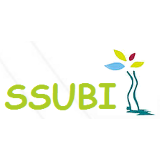Your Window to the World
Please note: the New York Times allows non-subscribers to read five articles a month for free
- Details
- Hits: 1272
Your Window to the World
Please note: the New York Times allows non-subscribers to read five articles a month for free
- Details
- Hits: 1481
Our Recipe of the Month is for Kuku Sabzi, an Iranian egg and herb dish that can be eaten as a snack or main course. Often referred to as "frittata-like," the proportion of eggs to other ingredients is lower than what is typical for a frittata. The addition of flour and baking soda makes kuku sabzi a bit more cake-like, resulting in a unique and absolutely herbaliscious!
- Details
- Hits: 1388
The Participant Observer Recipe of the Month is for Spanish Gambas al Ajillo. Only taking about 10 minutes to prepare this scrumptious dish is a very popular in tapas bars.
- Details
- Hits: 1613
 |
This year marks the 30th anniversary of the San Diego Latino Festival. Understandably the pandemic impacted the festival, but we are excited to report that it has returned in full vigor with live film screenings and a number of exciting special events for 2023. This year's festival will feature over 150 feature-length films and shorts that represent a wide variety of Latino experience, both here and in Latin America. There will be opening and closing night parties (with live music), a festival-long art exhibition (Arte Latino Gallery & Mercado), an awards ceremony, a festival “village” of community partners and sponsors, and the return of the Sabor Latino Food, Beer & Tequila Fest (March 11) and more. Every year, the festival producers, the San Diego Media Arts Center, host a Media Kickoff party to introduce the festival and to provide an opportunity to talk with local filmmakers whose films have been selected for this year’s festival. |
- Details
- Hits: 1199
Joomla!
Extensions
The Joomla! content management system lets you create webpages of various types using extensions. There are 5 basic types of extensions: components, modules, templates, languages, and plugins. Your website includes the extensions you need to create a basic website in English, but thousands of additional extensions of all types are available. The Joomla! Extensions Directory is the largest directory of Joomla extensions.
Components
Components are larger extensions that produce the major content for your site. Each component has one or more "views" that control how content is displayed. In the Joomla administrator there are additional extensions such as Menus, Redirection, and the extension managers.
Modules
Modules are small blocks of content that can be displayed in positions on a web page. The menus on this site are displayed in modules. The core of Joomla! includes 24 separate modules ranging from login to search to random images. Each module has a name that starts mod_ but when it displays it has a title. In the descriptions in this section, the titles are the same as the names.
Content Modules
Content modules display article and other information from the content component.
User Modules
User modules interact with the user system, allowing users to login, show who is logged-in, and showing the most recently registered users.
Display Modules
These modules display information from components other than content and user. These include weblinks, news feeds and the media manager.
Utility Modules
Utility modules provide useful functionality such as search, syndication and statistics.
Navigation Modules
Navigation modules help your visitors move through your site and find what they need.
Menus provide your site with structure and help your visitors navigate your site. Although they are all based on the same menu module, the variety of ways menus are used in the sample data show how flexible this module is.
A menu can range from extremely simple (for example the top menu or the menu for the Australian Parks sample site) to extremely complex (for example the About Joomla! menu with its many levels). They can also be used for other types of presentation such as the site map linked from the "This Site" menu.
Breadcrumbs provide users with information about where they are in a site.
Page 7 of 28










